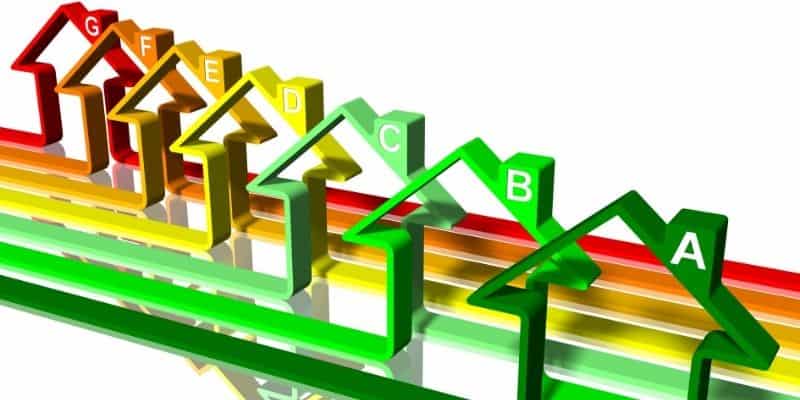5 Upgrades Worth Making to Improve Energy Efficiency in Your Home
Posts contain affiliate links, see disclosure for more details.

While some modern homes were built with energy efficiency in mind, that’s not always the case. Certainly, far fewer older homes included architectural plans that considered energy conservation or the utility bills. So, it’s left up to homeowners to figure out what certain upgrades will do for their home’s energy efficiency and if they’re worth implementing or not.
Accordingly, here are 5 upgrades worth considering when looking to improve the energy efficiency and cut your bills.
1. Door & Window Maintenance or Replacement
Doors and windows are costly from an energy loss standpoint. Much heating is lost when opening the door or leaving it ajar. A door caterpillar to block the door from airflow is a good first step. It’s probably what your grandmother did, and it still works today. Adding stick on insulators between the door frame and the door helps to prevent airflow too.
Also, windows don’t even have to be open to create problems with heat loss. When the window is poorly fitted or the frame has become less reliable over time, it can let cold air in and warm air out. If the caulking has been chipped away, then this needs replacing to create a better seal. But when the window has seen better days, it may be time to replace it altogether.
2. Upgrade the Heating
Depending on what part of the country that you live in, you may be more focused on the cost of heating compared to the expense related to cooling. While weather and temperatures are variable, it’s only a handful of months of the year when it’s summer and the cost of running a couple of standing fans or an AC unit is noticeable.
The cost of heating is another matter. But overall, it’s not uncommon to see it being over 40 percent of the total cost of energy usage in the home. This is why you need the most efficient heating system possible to avoid overspending in this area.
Again, deciding what type of service you will be taking home depends on your own specific needs. No unique and universal service will adapt virtually every single case. For that, make sure you examine your property and research for your options. Make sure you reach out to local services, such as iHeat‘s, and do not overthink about it. You will not want to freeze, much less when winter is just around the corner.
When you have radiators that are supplied with hot water from an old boiler, then they may be no longer running well. While the cost of a new boiler may be off-putting at first, when you consider the value it provides over many years to come, along with the cost savings each month, then it’s very reasonable.
The boiler replacement cost does depend on several factors, including what brand of boiler is present and the one you’ll replace it with, where in the UK you’re located, the boiler flue and how complex the installation will be, and the warranty length too. New boiler prices vary – so does working with different companies to install one.
Boiler Central provides boiler installation cost advice and can arrange for a booking to install a new boiler. Costs do vary, so look at this boiler cost guide to get a clear idea what how much the cost of a new boiler might be. They also have excellent online reviews, which are reassuring too.
NOTE: Don’t forget that you could be entitled to funding to help you with new boiler and heating upgrades, such as a boiler grant, which may entitle you to a free or heavily subsidised boiler upgrade.
3. Change the Appliances
While the household appliances aren’t always the thing that comes to mind, they are responsible for approximately 15 percent of the energy that your home uses.
One way to go is to get a certified appliance that uses less energy. Energy Star rate low-energy appliances and provide a good rule of thumb. Every modern appliance has an energy rating that you can shop by. The number of kilowatts used by an appliance is a solid point of comparison from a current appliance to a replacement to see if it’s going to be more energy-efficient or not.
Also, bear in mind that better quality appliances come with Eco modes of some kind. These use lower temperature water and consume less water to complete their task. As a result, they consume fewer kilowatts of power during the life of the appliance.
4. LED Desk Lamps
While you probably have gone around and replaced the older fluorescent bulbs with LED ones, maybe the desk lamps and standing up lights didn’t receive the same treatment?
Some LED desk lamps accept a larger LED bulb and still look sleek on any desk. They’re well worth swapping out and donating your old lamp to a charity shop. Someone else can benefit from it who is grateful for the affordable lamp and isn’t so concerned about energy usage.
Also, don’t forget any up lights added to remove darker corners in some rooms. They’re helpful additions but all too easy to forget about when it comes to LED lighting upgrades.
5. Outdoor Garden Lighting
A nice upgrade to the exterior of the property is small LED lights in the garden.
These can be solar-powered, so they don’t rely on mains electricity. They use sensors to figure out when you’re walking around in the garden and use minimal energy the rest of the time. Some of these little wonders can shiny brightly for several hours on a full charge but can still provide some illumination in the winter when there’s more cloud cover.
There’s plenty of big and small things that can be upgraded to improve your home’s energy efficiency. Either start small to get the ball rolling or aim for something big like a boiler replacement to take a larger chunk out of your future energy bills.






